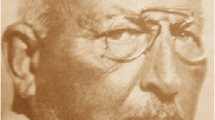Abstract
Whereas organs from donors must be removed almost immediately after death to maximize organ viability in the recepient, there is a slightly longer window for tissue allograft recovery. To determine the maximum safe interval after death within which bone allografts may be harvested for clinical use, an experimental model was devised using adult Sprague-Dawley (SD) rats and duplicating cadaveric storage techniques. Allografts were procured at increasing time intervals after death. The grafts were then transplanted to 80 living SD rats, and the animals killed at 7 weeks to evaluate any increase in the risk of infection and bacterial colonization. None of the allografts procured within 48 h after death were colonized with bacteria, while 12% of grafts procured at 96 h and 50% of allografts procured at 1 week were colonized. The results suggest that it may be possible to extend the safe period within which cadaveric tissue may be procured for transplantation to up to 96 h following death, provided scrupulous measures to prevent and detect microorganism contamination are followed.
Similar content being viewed by others
References
Cruz LD (1988) A look inside a bone bank. AORN J 47:1196–1200
Enneking WF, Eady JL, Burchardt H (1980) Autogenous cortical bone grafts in the reconstruction of segmental skeletal defects. J Bone Joint Surg [Am] 62:1039
Jackson JB (1987) Bone banking: an overview. Lab Med 18:830–833
Mankin HJ, Gebhardt MC, Tomford WW (1987) The use of frozen cadaveric allografts in the management of patients with bone tumors of the extremities. Orthop Clin North Am 18:275–289
McDonald DJ (1994) Advances in clinical medicine: limb-salvage surgery for treatment of sarcomas of the extremities. Am J Roentgenol 163:509–513
Nather A (1991) Organisation, operational aspects and clinical experience of National University of Singapore Bone Bank. Ann Acad Med Singapore 20:453–457
Tomford WW, Thongphasuk J, Mankin HJ (1990) Frozen musculoskeletal allografts: a study of the clinical incidence and causes of infection associated with their use. J Bone Joint Surg [Am] 72:1137–1143
Weiland AJ, Moore JR, Daniel RK (1983) Vascularised bone autografts: experience with 41 cases. Clin Orthop 174:87
Author information
Authors and Affiliations
Rights and permissions
About this article
Cite this article
Kumta, S.M., Kendal, N., Lee, Y.L. et al. Bacterial colonization of bone allografts related to increased interval between death and procurement: an experimental study in rats. Arch Orthop Trauma Surg 116, 496–497 (1997). https://doi.org/10.1007/BF00387585
Received:
Issue Date:
DOI: https://doi.org/10.1007/BF00387585




